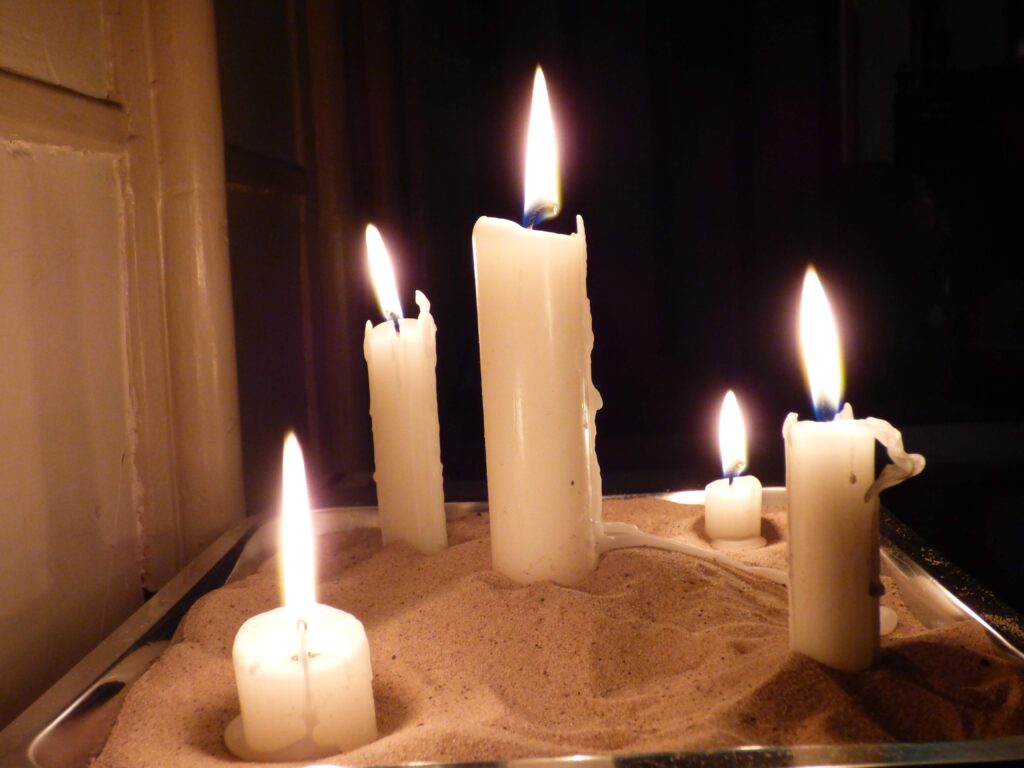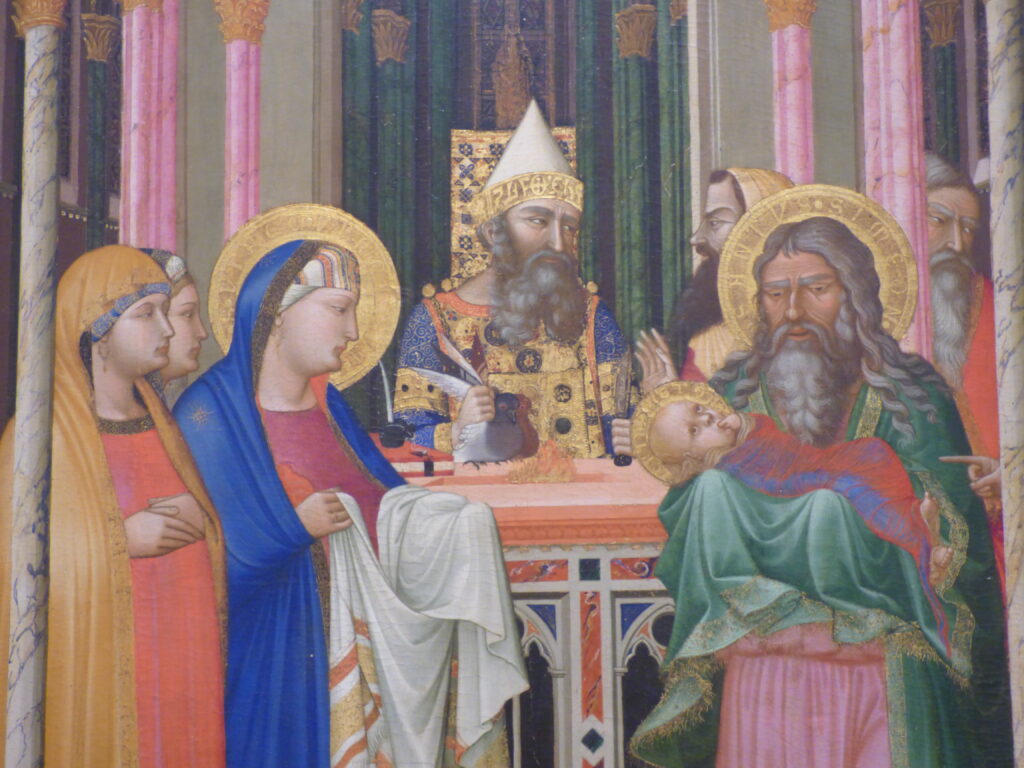Candlemas is the day the church sets aside to mark the infant Christ’s Presentation in the Temple required by the Abrahamic Covenant of Hebrew tradition. It is the festival when Jewish parents present their child to the community after birth to give thanks, having allowed the mother to heal for forty days following delivery. Medical science still recognises those forty days as the ‘six-week check’ for postnatal mothers.
Candlemas is a Feast celebrating the body and the eternal covenant of humanity and divinity, especially the life-giving, childbearing regenerating bodies of women in Our Lady, and the growth of the male Christ child from newborn to teething infant, each accomplished by fertility in God.
Liturgically, Candlemas, Presentation of the Lord at the Temple, signals the change of the four seasons from the Winter of Advent, Christmas and Epiphany to the Spring of Ordinary Time, Lent and Easter. In the liturgy of prayer, we move from the Marian Antiphon of Winter’s Alma Redemptoris Mater to Ave Regina Caelorum’s Spring. In this season, the first year of Christ’s life is sealed from his conception at the Annuniciation to his first Spring as Lamb of God, true God and true Man.

Candlemas is the Mass in the year where, traditionally, church candles for the coming year are blessed, including ones the faithful bring to have blessed to use at home. Christ’s light comes out into the world symbolised by the candles and the Presentation in the Temple – candles that we receive at the Sacraments of Initiation in Baptism and Confirmation, candles we use to declare our faith at the Easter Vigil, candles that light the altar for the liturgy of the Eucharist, Nuptial Mass, conferment of Holy Orders and the admission to the vowed religious life, where light signifies life.
We would do well to recall Candlemas is set in February, month of the Holy Family. It is flanked by St Bríd (1 February) Patroness of Ireland and Anglo-Saxon Princess, St Werburgh (3 February). St Bríd, daughter of an unwed slave and an Irish Chieftain, is the founding mother of many an Irish religious house either for men or women, fertile in faith and its propagation throughout Ireland.
St Werburgh was an Anglo-Saxon princess born at Stone, Staffordshire, and revered reformer of English conventual life. Indeed Stone, birthplace of St Werburgh, is one of the first seedings of Dominican life, in what Cardinal St John Henry Newman named the Second Spring of the Catholic faith in the Nineteenth Century following three centuries of persecution. The Dominican Sisters at Stone remain there to this day from their beginnings in the 1840s England.
Legitimate, illegitimate, high-born or low-born the church seeds the faithful in the Holy Spirit from the fullness of humanity by the fertility of men and women, bodily or spiritual regardless of obstacles.
Alanna-Michelle, North West Fraternal Group
Candlemas 2022

